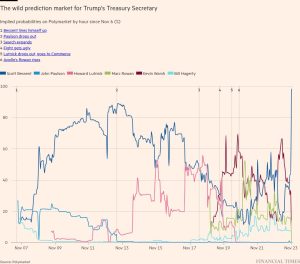Fears for Little League baseball in the US as children’s sport commercialises
Unlock the Editor’s Digest for free
Roula Khalaf, Editor of the FT, selects her favourite stories in this weekly newsletter.
The writer is a contributing columnist, based in Chicago
For decades, “Little League” baseball has been a pillar of US Midwest culture: kids playing local kids, coached by a parent, at the town baseball diamond.
But now that idyll of Main Street life is being priced out of an increasingly lucrative US youth sports market, children’s sports experts say. Parents sometimes spend tens of thousands of dollars a year travelling around the country to see their kids coached by professionals, playing at state of the art facilities — hoping it will pay off one day in college scholarships, or even a professional sports career.
What used to be mostly a hyperlocal pursuit has become a $30bn-$40bn a year nationwide youth sports industry, Tom Farrey, executive director of Aspen Institute’s Sports & Society Program, told me. “More money is flowing through youth sports than the NFL [National Football League] or any other professional league,” he says.
The sector is also attracting private equity investment. This year, PE titans and professional sports team owners Josh Harris and David Blitzer founded Unrivaled Sports, which says it expects to have 600,000 young athletes playing on its properties annually.
According to a 2022 survey from Aspen Institute’s Project Play, the average US family spends $883 a year on just one child’s primary sport. But spending isn’t equally spread: wealthy families spend four times as much as the lowest-income households.
“Historically, college and professional sports have provided some avenue of mobility for people of colour and lower income people,” Andrew Zimbalist, sports economist at Smith College, told me. But the increasing commercialisation of youth sports “shuts down that avenue of opportunity” by preventing poor or minority children from getting top-quality training, he says. “It reinforces the class divide.”
“‘Travel ball’, as it is known, has taken over. It’s now become such a big business that it’s destroying Little League,” says Chris Yakey, president (as well as coach, volunteer groundsman, fundraiser) for Eastside Little League. That is a survivor of my neighbourhood league in 1960s suburban Detroit: my best friend’s brothers played ball at the local school, and I acted as official scorer. Yakey says the league had 500 participants as recently as a decade ago: that fell this year to 238 and he fears it may eventually cease to exist.
Lary Sorensen pitched in the same league where I scored and graduated to play “travel ball” for the Kowalski Sausage team at age 16. There he was able to make the connections that landed him a scholarship to the University of Michigan, and a decade-long career in major league baseball. Commercialised sport should be for older teens, he says — not starting as early as seven, as happens today.
And Sornsen cautions that parents sometimes “spend more money on trying to get a college scholarship [by enrolling kids in pay-to-play sports] than they could get from the scholarship”. Zimbalist says families would be “better off saving for college than investing in ‘travel ball’,” noting that only tiny percentage of college football athletes get drafted to the NFL.
So why do parents do it? Dionne Koller, director of the Center for Sport and the Law at the University of Baltimore (whose own children played “travel ball”) tells me “parents get an emotional pay-off from seeing their kids perform, and the government has pushed the idea that good parents get their kids involved in youth sports”.
No one is disputing that sport is good for children: the US government’s National Youth Sports Strategy outlines the physical and mental health benefits of regular physical activity. And it can boost self-esteem, improve time management and help develop leadership and teamwork skills. Koller says there’s a role for the travel sports circuit but “it’s overused at too young an age”.
Farrey thinks the pendulum is beginning to swing back towards community sports. “We are reaching a point where intensive, high-dose early sports specialisation is just getting too taxing for many families . . . and there’s such pressure on the kids.” Let’s hope that happens before Little League is gone forever.
#Fears #League #baseball #childrens #sport #commercialises





